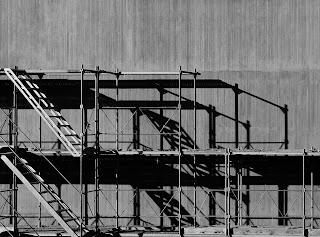Frame Scaffolding Systems: A Versatile Solution for Construction and Maintenance
Construction and maintenance projects often require safe and efficient access to elevated areas, and that's where scaffolding systems play a crucial role. Among various types of scaffolding, frame scaffolding systems stand out as one of the most versatile and widely used solutions in the construction industry. These systems are designed to provide a stable platform for workers to carry out their tasks at elevated heights, ensuring their safety and productivity. In this article, we will explore the features, advantages, and applications of frame scaffolding systems.
What is Frame Scaffolding?
Frame scaffolding, also known as baker scaffolding or simply
"frame," is a type of modular scaffolding that consists of vertical
frames connected with horizontal and diagonal braces. The frames are
constructed using steel or aluminum tubes, creating a stable structure for
workers to stand on and perform their duties. Frame scaffolding is
characterized by its simplicity, ease of assembly, and adaptability to various
job sites.
Key Features and Components
- Frames: The core
component of frame scaffolding is the vertical frames. These are usually
rectangular in shape and come in various sizes, such as 5 feet by 5 feet
or 3 feet by 6 feet. The frames have pins or connectors on each end,
allowing them to be stacked and connected vertically.
- Braces: Horizontal
and diagonal braces connect the frames, providing stability and preventing
swaying or collapsing. Braces come in different lengths and are essential
for distributing weight evenly across the scaffold.
- Platforms: The
working platforms are placed on top of the frames, creating a safe and
sturdy surface for workers and tools. The platforms may be made of wood,
steel, or aluminum, depending on the specific requirements of the project.
- Guardrails:
Guardrails are installed along the edges of the platform to enhance worker
safety and prevent accidental falls.
- Casters or Base Plates:
Frame scaffolding can be equipped with either caster wheels or base
plates. Casters are useful for easily moving the scaffold to different
locations, while base plates provide a stable foundation when the scaffold
needs to be stationary.
Advantages of Frame Scaffolding Systems:
- Versatility: Frame
scaffolding systems can be adapted to various heights and configurations,
making them suitable for both low-rise and high-rise projects. They can be
easily customized to fit tight spaces, irregular shapes, and uneven
terrains.
- Ease of Assembly:
Frame scaffolding is straightforward to assemble and dismantle, saving
valuable time on the job site. The modular design allows for quick setup
and efficient transportation.
- Sturdiness and
Stability: With its sturdy steel or aluminum construction and
well-designed bracing, frame scaffolding offers a stable working platform
for workers. This stability is essential for ensuring the safety of
everyone involved in the project.
- Cost-Effective:
Frame scaffolding systems are generally more cost-effective compared to
other scaffolding types, such as suspended scaffolding or mobile
scaffolding. The simplicity of design contributes to lower material and
labor costs.
- Accessibility and
Productivity: Frame scaffolding provides easy access to different
areas of a building or structure, enhancing productivity and workflow for
construction and maintenance tasks.
Applications of Frame Scaffolding:
- Construction: Frame
scaffolding is commonly used in various construction projects, including
building construction, renovations, and repairs. It allows workers to
reach different levels of a building safely.
- Maintenance and
Repairs: Whether it's painting, cleaning, or repairing building
facades, frame scaffolding provides a secure platform for workers to carry
out their tasks efficiently.
- Event and Entertainment
Industry: Frame scaffolding is also used in the event and
entertainment industry for setting up stages, lighting rigs, and sound
equipment.
- Industrial Projects:
Frame scaffolding finds applications in industrial settings, such as
maintenance work in factories, refineries, and power plants.
- Film and Media
Productions: In film and media production, frame scaffolding is
utilized for building sets, camera platforms, and temporary structures for
special effects.
In conclusion, frame scaffolding systems offer a versatile
and reliable solution for construction and maintenance projects of all scales.
Their ease of assembly, adaptability to different terrains, and
cost-effectiveness make them a popular choice in the construction industry.
When considering a scaffolding system for your next project, frame scaffolding
should be a top consideration due to its safety, efficiency, and productivity
benefits. However, it is essential to adhere to safety guidelines and
regulations while using any scaffolding system to ensure the well-being of
workers and the success of the project.



Komentarze
Prześlij komentarz